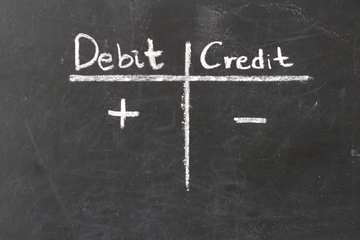Credit scores are essential in our lives, determining everything from our ability to borrow money, rent a home, and our auto insurance rates. Three credit bureaus report on each of us: Experian, TransUnion, and Equifax. Experian is the largest of the three, but each credit bureau is considered just as accurate. However, when considering the credit score, though several scoring companies exist, FICO is the most common, used in almost every lending decision.
Understanding the basics of credit scoring and credit reports is essential for consumers. A credit score has such significance in our lives that a high score could save you tremendous amounts of money over a lifetime of borrowing. Let’s talk about the credit score that can land you the best interest rates on borrowed money
Key Takeaways
- FICO and VantageScore are the most used scoring companies, with 90% of lenders using FICO.
- Each scoring company has different versions of credit scores.
- Lenders use different scoring models and update the credit bureaus at different times.
- Various aspects of your credit score might be weighted differently depending on the company or model.
- It is essential to check your score regularly, no matter how you check it.
How Is Credit Score Calculated?
While the scoring model might vary, similar information is used when calculating credit scores. Factors such as the number of accounts, balances owed, payment history, and percentage of credit used will come into play in each score’s final number. Credit scoring is a way for lenders to determine whether or not they find you a risk to lend money to, and lenders like seeing that you have managed different account types successfully. Those accounts factored into your credit mix include loans, mortgages, credit cards, and other debt types. This credit mix means that the scoring method might account for the types and numbers of accounts you’ve had in the past.
At the heart of credit scoring is a way to show lenders how well you’ve repaid your debts in the past, meaning the amount of time you’ve had credit matters. It will often be accounted for in the scoring model.
When deciding whether to loan you money, missing or late payments are critical for lenders. They want to know that you have always made your payments on time regardless of whether the account is a loan or secured or unsecured credit card. If you have been missing payments, it could mean you’re already overextended with credit. The scoring models will reflect your payment history as the most critical component of your score, and late or missed payments and bankruptcies will matter.
Each scoring model will apply different weights of importance to the components of your score. To give you an idea of how weighting might look; your FICO 8 score considers:
- Payment history: 35%
- Amount owed: 30%
- Length of credit history: 15%
- New credit: 10%
- Types of credit: 10%
Why Is My Credit Score Different on Different Sites?
You might navigate to different sites to check your score and see that they are often different. The difference could be due to when the score is checked, which credit bureau has been checked, and what credit score model is used.
Why Do I Have Different Credit Scores?
One might think each lender would use the same data and model to produce a score, but lenders have differing needs and use various models. As multiple credit scores exist, each will vary based on the model and data used to calculate the score. For example, a credit card company will consider different aspects than a personal loan. Though the variations will often be minor, each bureau will typically vary in what or how they report, resulting in different scores.
When the Score Is Checked?
The different sites might pull your score at different times, resulting in a discrepancy as your scores constantly change. If you check your free score from your bank or credit card provider, one might have pulled your score at the first of the month and the other mid-month. Your scores could be considerably different if you had applied for a new card, accumulated additional debt, or missed a payment between the dates the data was pulled.
Which Credit Bureau Was Checked?
As mentioned above, Equifax, Experian, and TransUnion might update your score at different times.
Each of the bureaus updates on different dates based on when information is sent to them from the lenders that send updates once a month. For instance, one credit card might report to Equifax on the 5th of the month, TransUnion on the 8th, and Experian on the 15th. With each credit bureau receiving reports on different days of the month, it can become confusing as to your actual credit score. Adding additional credit accounts might only make it more convoluted.
Additionally, lenders don’t always report to all three credit bureaus, meaning the credit scoring companies could be calculating scores based on differing information.
What Credit Score Model Is Used?
Different credit score models exist, and the score might be based on one version of FICO or Vantage Score. The scoring models most used by lenders are FICO 5 and 8, but the lender showing your score for free could use a different model. For instance, your bank could use FICO 8 and show you an Equifax score of 712, while another free score service shows 690 due to using VantageScore 3.0.
One reason lenders might use an older model is simply due to the cost of updating to a new model, which can be very expensive. Another reason is that they find the older model is a better predictor of creditworthiness for the type of credit they offer.
What Are the Main Scoring Models?
There are a variety of models in use, and they include:
- FICO
- VantageScore
- TransRisk
- Experian’s National Equivalency Score
- Credit Xpert Credit Score
- CE Credit Score
- Insurance Score
VantageScore and FICO are the most commonly used scoring models, and about 90% of lenders use FICO to evaluate credit. FICO has been in use since 1989 but has undergone numerous revisions to consider changing borrower behaviors. One model reduced the weight of unpaid medical bills, whereas another removed many tax lien records.
The last FICO score update was FICO 10, which was released in 2023. Of the models in use, FICO 8 is the most used by lenders, but FICO scores 2,4, and 5 are often used by auto and mortgage lenders.
VantageScore was introduced in 2006 as a collaboration of the three credit bureaus to introduce competition to FICO and weights the different score factors differently than FICO. It, too, has gone through updates, with the latest version being VantageScore 4.0, however, the most used VantageScore model is considered to be VantageScore 3.0.
VantageScore weighting is:
- Payment history: 40%
- Age and type of credit: 21%
- Credit Utilization: 20%
- Total balances: 11%
- Recent behavior: 5%
- Available credit: 3%
Both credit models use the score range of 300-850. Still, when one considers the different models in use by lenders and each model’s different weighting of credit factors or other information, the scores will often be similar but very rarely identical.
How Often Should I Check My Credit Score?
While checking your score at least once a year is recommended, it’s now possible to check it regularly. Twenty years ago, you might have had to pay for this information, but today, many lenders and banks provide your credit score as a free benefit.
Regardless of how you choose to check it, it is wise to take a minute to do so once a month. If you see a dramatic change in your score without any change to your borrowing behavior, it could indicate that something is incorrect, and you need to review your complete credit reports.
Bottom Line
There are a lot of different scores out there, but FICO 8 is the most commonly used. Still, other models have specific uses for specific types of lenders. The numbers could differ wherever you check your score, but they still indicate how well you manage your credit. If your bank shows one score and your credit card company shows another, likely, they aren’t too far apart. Watching them over time will indicate how you’re performing.



